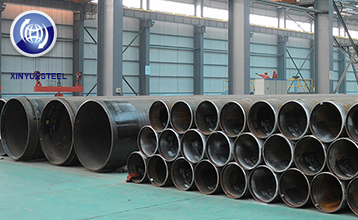Export tariff readjustment, steel market ushers in a watershed?
Aug. 04, 2021
Driven by the production restriction policy, the steel market performed eye-catching in July. As of July 31, the hot coil futures price had exceeded the 6100 yuan / ton mark, the rebar futures price was close to 5800 yuan / ton, and the coke futures price was close to 3000 yuan / ton. Driven by the futures market, the spot market generally rose. Taking billet as an example, the price of mainstream billet reached 5270 yuan / ton, with an increase of nearly 300 yuan / ton in July. Overall, the rise has become the main tone of the recent steel market. However, with the adjustment of steel export tariff policy again, this upward trend may usher in a watershed.
On July 29, the Tariff Commission of the State Council announced that from August 1, the export tariffs of ferrochromium and high-purity pig iron will be appropriately increased, the export tax rates of 40% and 20% will be implemented respectively after adjustment, and the export tax rebates of 23 kinds of steel products such as rail will be cancelled. Taking into account the tariff adjustment in May this year, after the two adjustments, a total of 169 export tax rebates of steel products have been "zeroed", basically covering all steel export varieties.
At the beginning of this year, under the goal of carbon peak and carbon neutralization, the large-scale outflow of steel led to the mismatch between supply and demand in the domestic market and a sharp rise in steel prices. Data show that in the first half of this year, China exported 37.382 million tons of steel, a year-on-year increase of 30.2%. The adjustment of steel export tariff policy once again reflects the determination of the state to stabilize exports and give priority to ensuring domestic supply through tax rate leverage.

In fact, the adjustment of steel export tariff policy in May has "cooled" the high steel price. The author believes that after the implementation of this round of tariff policy adjustment, it will also "cool down" the rising steel price, and it does not rule out the possibility of high falling steel price. The reasons are as follows:
First, the export advantage of steel will be weakened, and more steel resources will flow back. The 23 varieties of which the export tax rebate was cancelled were classified as high value-added varieties in the tariff policy adjustment in May. This adjustment will weaken the price export advantage of such products and promote the return of resources to the domestic market.
In addition, the increase of steel price in the international market narrowed significantly in July, while the domestic steel price generally rose, and the price difference between domestic and international steel narrowed. At this time, the export tax rebate will be cancelled, the export advantage of domestic steel will be further weakened, and more will be sold domestically for profit consideration. This will effectively improve the contradiction between supply and demand in the domestic market and promote the return of steel prices to a reasonable range.
Second, this round of tariff policy adjustment shows that the country has not changed in the general direction of ensuring supply and stabilizing price. Although the previously expected increase in export tariffs on products such as hot coils has not been fulfilled, this does not mean that it will not be fulfilled in the later stage.
In the long run, restraining steel export and ensuring the stable operation of domestic steel price through tariff policy adjustment have become the focus of macro policy. In this case, it is difficult for steel prices to perform the rapid trend in the first half of this year. In the short term, the tariff policy adjustment will have a "cooling" effect on the "restless" capital formation in the market, the market speculation may leave the market, and the space for the continuous rise of steel prices is limited. At the same time, the adjustment did not raise the export tariff of mainstream export steel, and did not completely block the door of steel export. The centralized return of steel export resources will not have a serious impact on the domestic market, and the impact on the supply and demand pattern of the domestic market is more flexible.
In the short term, the market will be more high and volatile. The depth of the final adjustment of steel price depends on the change of supply and demand relationship and the fluctuation of raw material prices such as iron ore.



